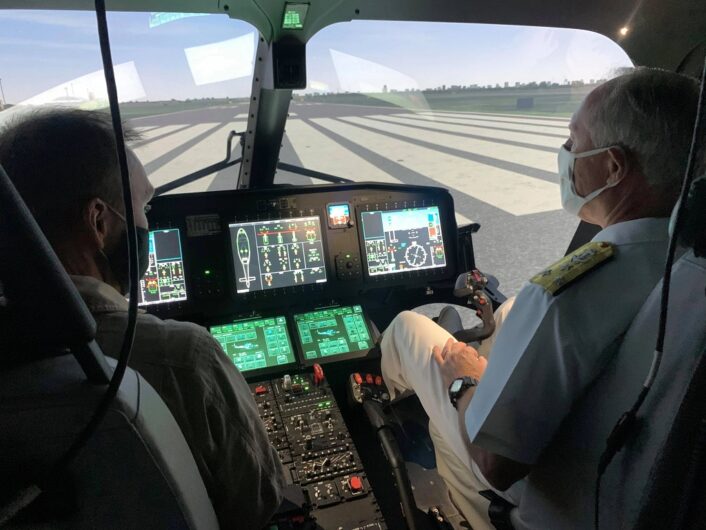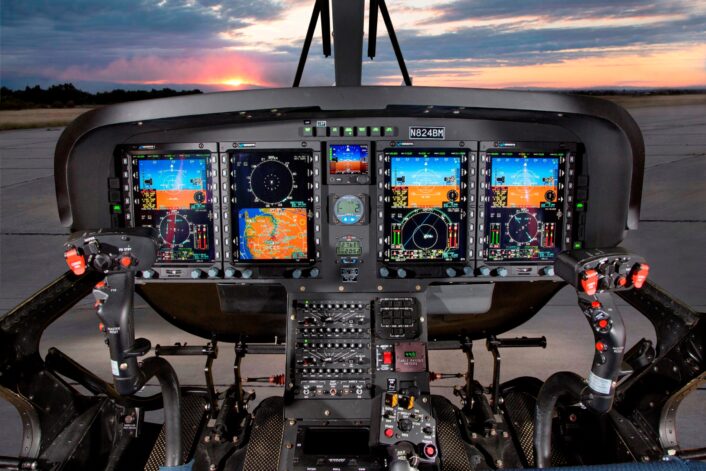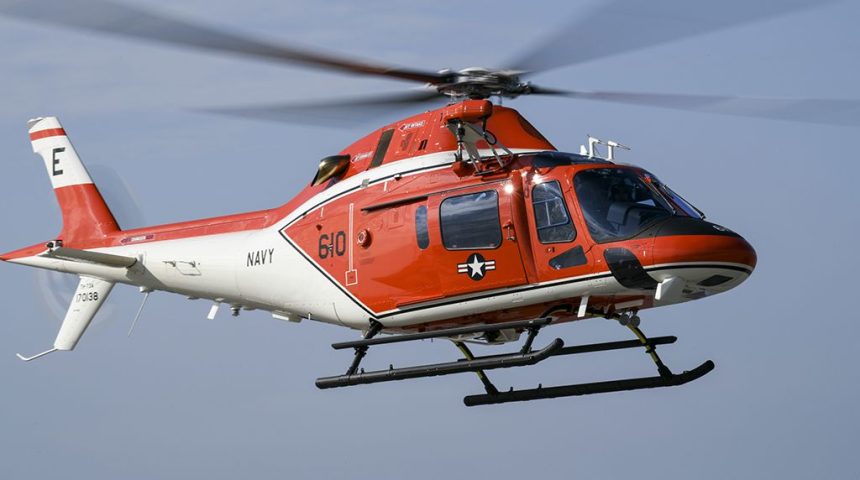Student naval aviators at NAS Whiting Field began training on the new helicopter that will replace the aging TH-57 Sea Ranger.
The U.S. Navy announced that the first class of twelve student naval aviators began training earlier this month on the new TH-73A Thrasher at Naval Air Station (NAS) Whiting Field in Milton, Florida, home of the Naval Undergraduate Flight Training of Navy, Marines and Coast Guard. The helicopter, which was first delivered in August 2021, will replace the 40-year-old TH-57 Sea Ranger that will soon be phased out as the TH-73 comes onboard.
“Training students in the TH-73A has been years in the making, and I’m excited on behalf of everyone who has helped get us to this point,” said Cmdr. Annie Otten, commanding officer, Helicopter Training Squadron (HT) 8. “I’m especially excited that the HT-8 “Eightballers” are the ones helping transition the students and instructors to the new aircraft. We are all on this journey together, and I can’t wait to get the students up in the aircraft.”
The TH-73A helicopters, a component of the Advanced Helicopter Training System (AHTS) program, are part of an initial contract for 32 helicopters, out of a total requirement of 130 aircraft, awarded in 2020. The new Advanced Helicopter Training System (AHTS) of the U.S. Navy includes not only TH-73A helicopters, but also new simulators and aircrew training services, a modernized curriculum and a new contractor logistics support contract for the maintenance and flight line support requirements of the new helicopter.
The TH-73A, based on the Instrument Flight Rules (IFR) certified variant of the popular commercial AW119Kx, has been fully certified by the Federal Aviation Administration (FAA) prior to delivery, thus bringing a ready-made solution that will transition the TH-57 platforms out of service by 2025, with the first helicopters expected to be retired during fiscal year 2022. The first 32 TH-73 are expected to be delivered through 2024.
Cmdr. Otten commented that the TH-73A will make student training more reflective of fleet helicopters. The current syllabus sees students in primary aviation training initially flying the T-6B Texan II aircraft, which has a glass display cockpit. If selected for helicopters, students move to the TH-57, which has older digital or analogue gauges instead of multi-function displays. After graduation, students will then move out to fleet aircraft, which again use glass display cockpits. The TH-73A has glass screens that are representative of, and mirror more closely, what pilots will see in the fleet.

“The first thing we are going to see with the students is that the glass cockpit they have trained to and the scan they developed in the T-6 are going to flow to this aircraft (TH-73A), and we will see them picking things up sooner than in the TH-57,” Cmdr. Otten said.
Additionally, Training Air Wing Five and Chief, Naval Aviation Training personnel have been working over the past several years to develop a well-designed and well-thought-out training program which could be as safe and effective as possible in preparation for the new helicopter. The new training program was validated by the first cadre of instructor pilots as they converted to the TH-73A.

“First we had to learn to fly the aircraft so we could teach the IPs,” said Maj. Luke Zumbusch, U.S. Marine Corps, one of the of instructor pilots to convert to the TH-73A. “Our job was to validate and verify that we could teach the maneuvers safely. For example, a normal approach, steep approach, formations for the IPs who eventually teach students in the TH-73A. Validating that the syllabus flow is good, the pace and type of training and the media in which the training was presented was the instructors’ under training (IUT) job. Their job was to validate those maneuvers and profiles.”
From start to finish, the aviation students spend approximately 38 weeks in the advanced training regimen at Whiting before they graduate and move to larger operational helicopters in the fleet, such as the H-60, H-53 and AH-1 helicopters. The length of the training is roughly the same of the TH-57, however the Navy says it will produce stronger pilots as they take advantage of the new technology and power that the aircraft brings. Before students begin flying the new helicopter, they will complete a rigorous course of groundwork in virtual reality and flying simulators to get them ready for the more powerful helicopter.
“We took this time to do an entire cultural change (in transitioning to the TH-73A),” commented Capt. Jack Waldron, U.S. Marine Corps TH-57 & TH-73A pipeline officer. “There is the concept of having iPads with access to course content and aviation-specific apps for flight planning, briefing or in-flight navigation. We’re not just changing the method of delivery, we’re changing the actual media they’re using. Virtual reality environment also provides a mixed reality environment. Students will ask questions. It’s a philosophy change.”








